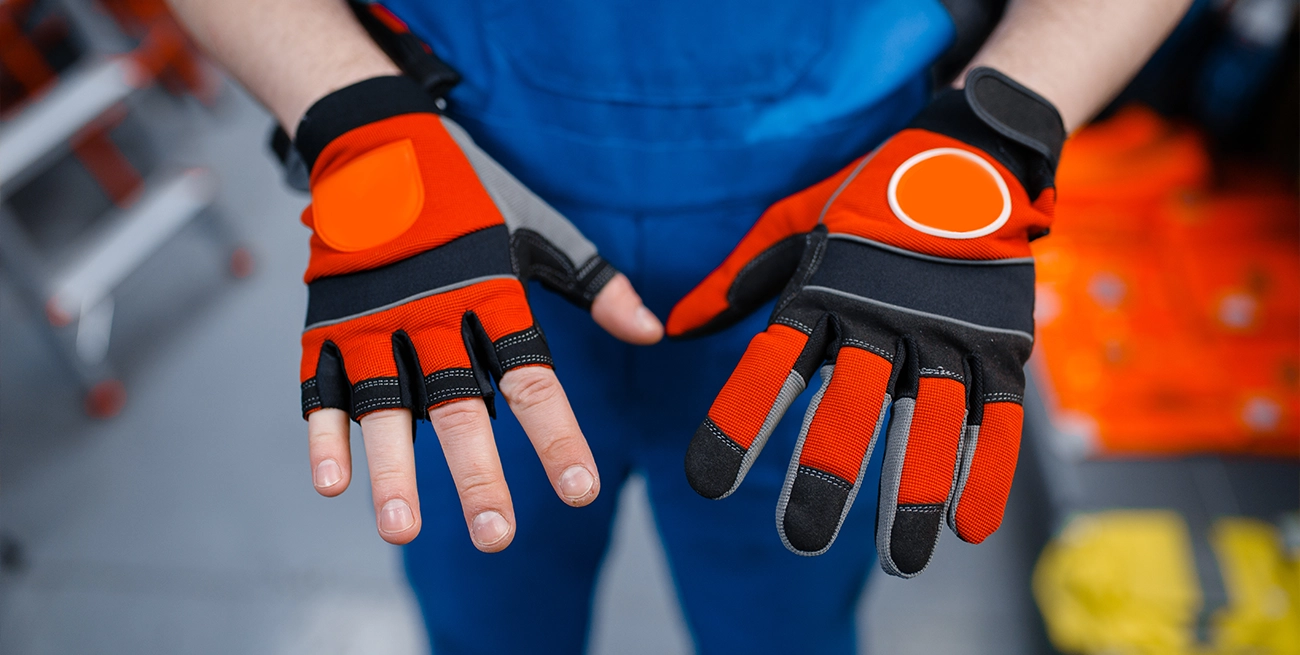Choosing Safety Gloves That Work for Your Industry

Gloves aren’t just accessories in industrial workplaces; they’re essential. The type of safety gloves you choose can mean the difference between a minor scratch and a serious injury. With countless materials, designs, and standards to consider, picking the right gloves is more complex than grabbing the first pair off the shelf. Let’s break it down to make the decision easier.
Material Matters
Every material has a specific job, and understanding them is the foundation for finding the right gloves.
- Leather: Known for its durability, leather gloves are great for tasks like welding and construction. They provide protection against abrasions and moderate heat while being tough enough to handle rugged work environments. However, they’re not ideal for chemical handling.
- Nitrile: If chemicals or puncture risks are part of the job, nitrile gloves are a solid choice. They resist oils, solvents, and many harsh substances while offering more puncture resistance than latex.
- Latex: These gloves are flexible and provide excellent grip, making them popular for tasks requiring precision. However, allergy concerns may limit their use.
- Cut-Resistant Materials: For industries involving sharp tools or materials, gloves made from Kevlar, Dyneema, or steel mesh are crucial. These materials prevent cuts and slashes, keeping hands safe in environments like manufacturing or food processing.
- PVC and Rubber: When dealing with corrosive substances or heavy cleaning jobs, PVC and rubber gloves step up. They resist chemicals and hold up well against prolonged exposure to liquids.
Fit and Comfort Are Not Optional
No one wants to work in gloves that feel like they belong to someone else. A poorly fitting glove can cause more problems than it solves, from blisters to reduced dexterity. Workers might even avoid wearing them altogether if they’re uncomfortable.
For repetitive tasks, lightweight gloves with a snug fit can reduce strain. For heavy-duty jobs, look for padded options that provide support while still allowing movement. And don’t forget about temperature: insulated gloves are a must for cold environments, while breathable materials are essential in hot conditions.
Industry Standards and Regulations
Glove selection isn’t just about protection; it’s also about compliance. Every industry has its safety benchmarks, and gloves often need to meet specific standards. Look for certifications that align with your industry’s requirements.
- EN 388: For mechanical risks like cuts and abrasions.
- EN 407: For thermal hazards such as heat and flame.
- EN 374: For chemical resistance.
Meeting these standards ensures workers are properly equipped to handle the hazards they face daily.
Common Missteps in Glove Selection
Mistakes happen, but when it comes to safety gloves, they can have serious consequences. One frequent error is underestimating the hazards. Just because a glove feels sturdy doesn’t mean it can handle every situation. Always match the glove’s material and design to the specific risks of the job.
Another issue is focusing only on cost. Sure, cheaper gloves save money upfront, but they wear out faster and may not provide adequate protection. Investing in quality gloves often saves money over time, as replacements are less frequent, and accidents are less likely.
Specialized Needs for Specific Industries
Every industry has unique challenges that require tailored glove solutions. Here are some examples:
- Construction: Workers need gloves that can handle abrasions, impact, and punctures. High-durability leather or synthetic gloves with reinforced palms are often the go-to.
- Healthcare: Disposable gloves dominate here, with nitrile leading the charge for its balance of flexibility and chemical resistance. Powder-free options reduce contamination risks.
- Food Processing: Hygiene is key, but so is cut resistance. Gloves for this field often combine anti-bacterial coatings with cut-proof materials.
- Oil and Gas: Grip and chemical resistance are critical. Gloves with textured surfaces and protective coatings keep hands safe in slippery, hazardous environments.
- Electrical Work: Insulated gloves rated for electrical hazards protect against shocks. These gloves come in different classes, depending on the voltage levels encountered.
Real-Life Lessons
A warehouse manager once shared how improper glove selection nearly cost a team member their hand. The worker was tasked with handling glass panes but wore gloves meant for general use. When a pane shattered, the gloves offered no protection against the sharp edges. After this incident, the company invested in cut-resistant gloves, and injuries dropped significantly.
Another story comes from a welder who resisted wearing gloves designed for high heat because they felt bulky. One day, a spark landed on his hand, leaving a burn that could have been prevented. After upgrading to gloves with better dexterity and heat resistance, his productivity improved, and the burns became a thing of the past.
Staying Ahead with Regular Reviews
Hazards in the workplace can change, and so can glove technology. Set aside time to evaluate whether your current gloves still meet your team’s needs. Check for wear and tear, assess compliance with updated standards, and consider feedback from workers who use the gloves daily.
Trial periods can be invaluable. Allow workers to test different types of gloves and provide input on what works best. Their firsthand experience often reveals insights that you might not consider.
Keep Them in Good Shape
Even the best gloves need proper care to perform their job. Store them in dry, clean areas to prevent damage from moisture or contaminants. For reusable gloves, establish a cleaning routine to ensure they remain effective and hygienic.
Encourage workers to inspect their gloves before each use. Small holes, worn areas, or compromised stitching can render even the toughest gloves ineffective. Promptly replace any gloves showing signs of wear.
Wrap It Up Like a Pro
Imagine the confidence of a team equipped with the right gloves for the job. Fewer injuries, happier workers, and smoother operations—all because someone took the time to get it right. Safety gloves might not be flashy, but they’re a critical part of the workday. Get the choice right, and your hands (and team) will thank you.


